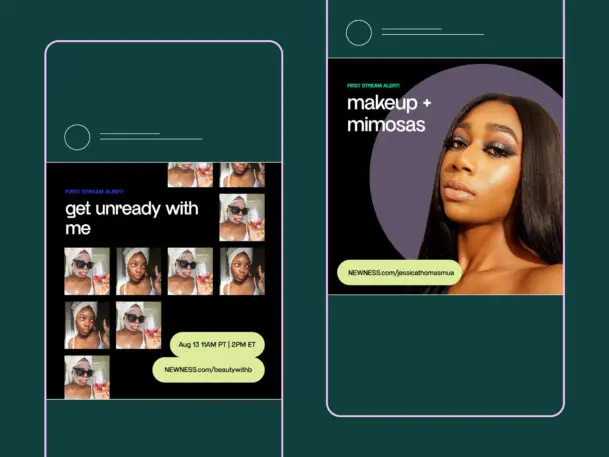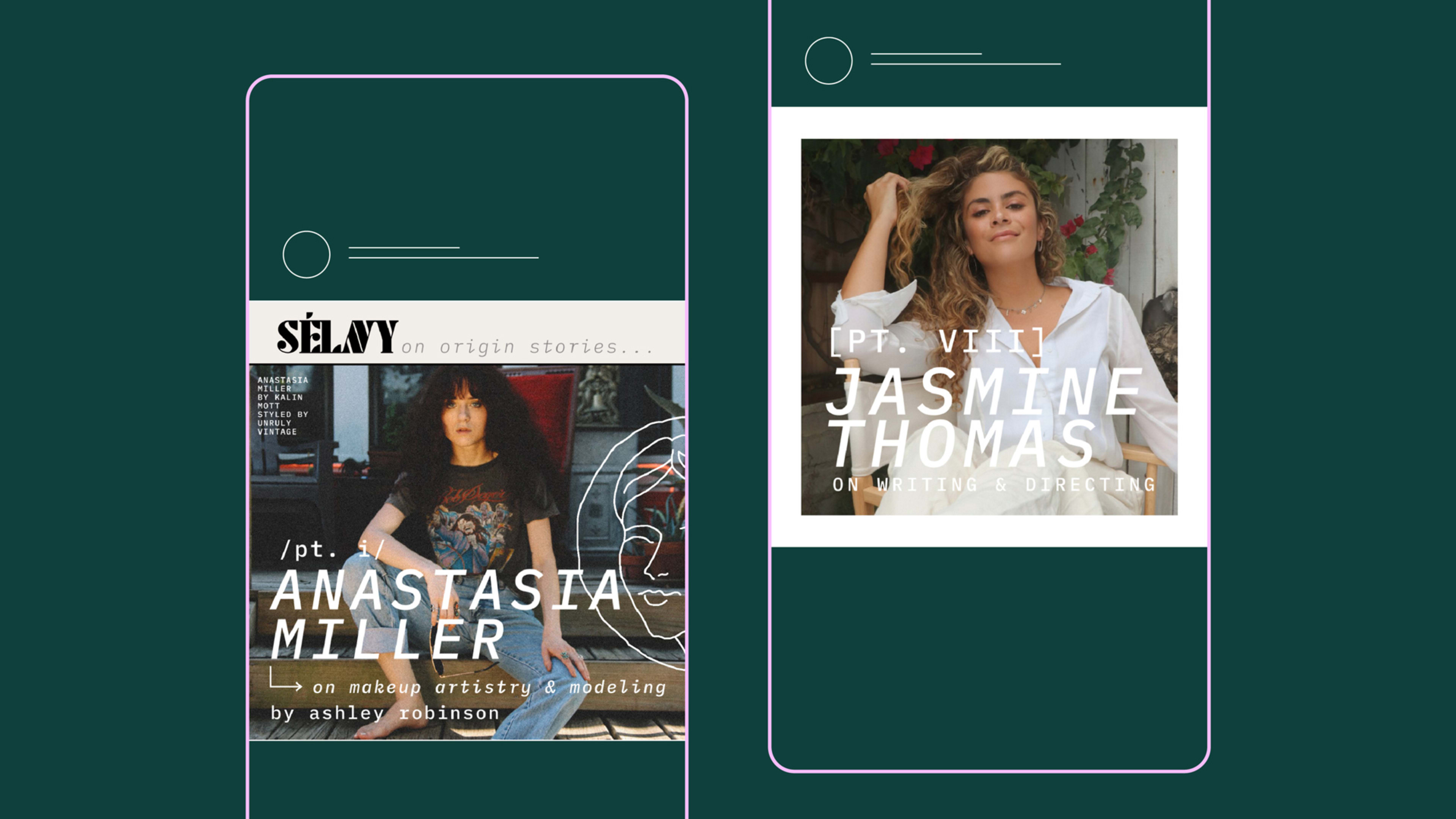Trevor O’Brien and Jeremy Gordon met at Twitter in 2013, when O’Brien was a director of product management and Gordon was VP of engineering. But when they decided to start a company together, it was their earliest experience—when both worked on video games—that infused their thinking.
“If you talk to a lot of people who’ve worked in the game industry, they’ll often tell you that the most fun thing to create is not the game—it’s usually creating the level editor,” explains O’Brien. “Level editors are super fun because you create these composable creative operations and you hand it off to somebody who’s very talented in being able to create fans and experiences. And you’re always surprised at what they bring back.”
They figured that the same spirit of assisted creativity could be applied to categories beyond gaming. And the one they chose to tackle was graphic design.
The result is a service called Projector. It’s an entirely browser-based tool for creating pieces of visual design—presentations, social posts and stories, printable items such as posters, and more—by yourself or with colleagues. With a profusion of templates, it aims to let people put together something attractive quickly and without much in the way of expertise—though you can also start with a blank page if you prefer.
O’Brien calls Projector “a collaborative graphic design platform,” which, though accurate, doesn’t narrow things down much. He allows that the popular nine-year-old Canva likely “has a similar thesis to ours.” But the collaborative design category also encompasses products such as Figma that focus on interface design—a task outside Projector’s self-defined wheelhouse. Even Photoshop—a product that every design tool competes with whether it wants to or not—just added collaboration in the form of an “Invite to edit” button.

So what is Projector’s goal? According to O’Brien, much of it lies in creating an experience that appeals to both laypeople and design pros, and helping the amateurs and the experts to work together.
“We all know that graphic design for all sorts of use cases is also a collaborative process,” he says. “Somebody has the impetus for an idea. Maybe they’re not the visual designer themselves, but they want to steer the direction of things. And then there’s this back and forth typically between a non-designer and a visual designer: ‘Oh yeah, that was my idea.’ ‘It doesn’t quite capture it.’ ‘That’s cool, what you did visually here.’ ‘Can we just go back and forth a few times?’ That collaboration has not been facilitated by any kind of modern software. So that was where we began.”
Projector uses templates to help users get started with social posts and stories, presentations, and more. [Animation: courtesy of Projector]Drew Taggart along with Alex Pall make up the DJ-ing musical duo The Chainsmokers. The two are also investors at Mantis VC, which put money into Projector as part of its $10 million Series B round last December. Pall says that he got excited about Projector because it solves a problem he once struggled with.
“I used to design all of our cover art for our albums, and I’m not proficient in Photoshop,” he says. “I got it done by some miracle. But I just think to how there’s so many amazing independent artists out there and creatives, starting their own companies and brands. And I think this service can be a tremendous asset to them, to not have to suffer what I went through.”
O’Brien and Gordon unveiled Projector in May 2019 and opened it to anyone who wanted to sign up in June 2020. It’s currently free, with a paid tier—offering advanced options such as team management tools—as part of the long-term plan.
PRETTY SIMPLE, SURPRISINGLY DEEP
If you’ve used other browser-based productivity services such as G Suite—oops, I mean Google Workspace—you shouldn’t have much trouble figuring out Projector’s collaborative tools. You can invite other people into something you’re creating, edit it simultaneously, and discuss your work via comments that appear along the right-hand side of the screen.
Beyond the collaboration-specific tools, the service aims to hit a sweet spot between the approachability that casual users require and the advanced tools that design pros crave. Rather than using PowerPoint-era terminology such as “decks” and “slides,” a Projector document is a “story” made up of “scenes.” Open one up, and most of the functionality you’ll see is related to basic stuff such as importing images and videos (including free stock material), inserting shapes, and editing text. Click the “Expand tools” button, and a toolbar of much richer editing options appears, including the ability to rotate elements, round off their corners, apply filter and transition effects, and more. Once you’re done, you can export as a video, GIF, or series of still images.
Advanced features include the ability to twist shapes and type. [Animation: courtesy of Projector]All in all, it does a thoughtful job of splitting the difference between two design constituencies. “You might have a professional designer who wants to come in and be the person who creates the very cutting-edge style that looks fresh, modern, and maybe a little bit differentiated,” says O’Brien. “And then you’ve got the person who’s like, ‘yeah, but all I’m here for is to change the words.'”
The fact that Projector can even aspire to be both easy and powerful reflects new advances in web technologies. It relies on WebGL, a library of graphics capabilities for browser-based apps that permits the precise rendering of elaborate visual elements on the fly. In the old days, that would have been a daunting undertaking in a browser. Unless, that is, someone built their browser-based app in Adobe’s Flash—which turned out to be a technological dead end.
WebGL has “only become recently mature enough and accessible enough to build a collaborative, reliable tool in the browser,” says O’Brien. “One of the things we’re trying to do is make the sorts of Adobe-like creative capabilities possible in a way that doesn’t feel totally overwhelming.” (WebGL 2.0, an updated version, packs even more power, but Apple’s Safari doesn’t yet support it, making it a no go for Projector.)
Projector uses WebGL to offer desktop-like tools in the browser. [Animation: courtesy of Projector]Slick though it is, Projector has plenty of headroom for growth. A new feature called Live Sessions, due later this month, is designed to address a basic annoyance about the WFH age: Conducting an online presentation by sharing your screen in a videoconferencing service such as Zoom often turns your crisp graphics into a blurry, choppy mess.
With Live Sessions, a Projector user can share a link—inside a Zoom chat session, for instance—that takes other people to a browser-based presentation that the user can control. Judging from the demo O’Brien gave me, the results are a lot more eye pleasing than shoving a show over a videoconferencing connection, and the process involved isn’t much more complicated.
We don’t need 10 times as many professional designers. We need a thousand times as many design-capable people.”
O’Brien says that other plans include melding Projector with other workaday collaboration tools in wide use, though at times the company’s ambitions outstrip what’s possible at the moment: “I can share a projector link with you in Slack, and it will show a preview image, but I’m like, ‘I really want to be able to navigate that thing in Slack.'” The company is also thinking about native mobile apps, a challenge it put off in part because helping people do graphic design on a smartphone’s dinky screen felt like a unique challenge unto itself. (I’m sad that the present version doesn’t work in Safari on my iPad Pro, which has plenty of display real estate.)
At the highest level, O’Brien says, “our very strong belief from a company perspective is that we don’t need 10 times as many professional designers. We need a thousand times as many design-capable people who can be part of the design process.” That’s a lot of potential customers—and they give Projector a calling that’s far loftier than if it was merely trying to recreate an old-school pro design product in the browser.
Recognize your brand’s excellence by applying to this year’s Brands That Matter Awards before the early-rate deadline, May 3.
